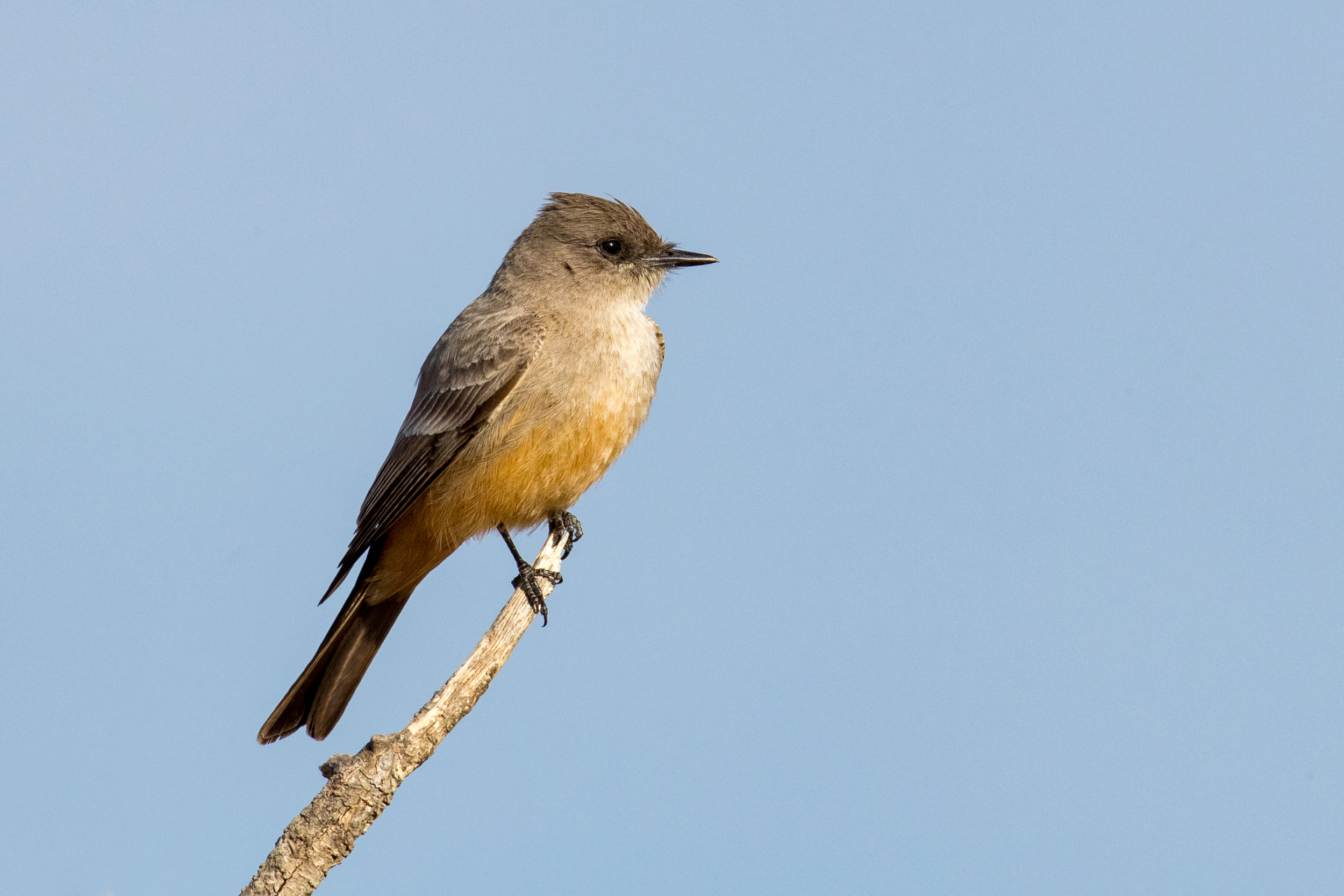The Black Phoebe has been expanding its range northward and in recent years has been breeding in a few places in Washington west of the Cascades.
Western Kingbird
Nashville Warbler
Yellow Warbler
The Yellow Warbler is aptly named for it is the most yellow of all North American wood warblers. The male has a bright, unmarked, yellow face and yellow throat and under parts. It is the only wood warbler with yellow spots in the tail. From below the tail and under tail coverts are entirely yellow. The male has red streaks on its chest, although this feature is quite variable. Its dark black eye is prominent and beady.
Orange-crowned Warbler
The Orange-crowned is a medium-sized warbler with an olive-green back and a yellow-green chest marked by indistinct gray streaks. There is a dusky gray stripe through the eye. The undertail coverts are brighter yellow. There are no wing bars or other distinctive marks on its plumage. In short, the bird is, “Striking in its plainness” (Gilbert, et al).
MacGillivray's Warbler
As with many of our western birds this warbler is named after human beings. John James Audubon named it in honor of the Scottish ornithologist Wiliam MacGillivray who authored the 5-volume History of British Birds (1837-1851). However, it was later learned that John Townsend (of Townsend’s Warbler and Townsend’s Solitaire) had named it for William Tolmei, a physician who worked for Hudson Bay Company.
Palm Warbler
The Palm Warbler is one of Washington’s “Winter Warblers.” In late fall and winter, with numbers varying considerably each year, Palm Warblers migrate south along the Pacific Coast through Washington, Oregon and California. In recent years Palm Warblers have been seen in Ocean Shores and on the Seattle campus of the University of Washington.
Black-throated Gray Warbler
Yellow-rumped Warbler
Hermit Warbler
The Hermit Warbler is considered a specialist in living in the canopy of 200 foot tall conifers. In western Washington it populates Douglas firs, western hemlocks, and western red cedars. It winters in pine-oak forests in Mexico and in California it enjoys Jeffrey, pondersosa, and lodgepole pines. It forages so high that it is often heard long before it is seen.
American Redstart
Wilson's Warbler
Wilson’s Warbler is often found along wooded streams, in low shrubs, willows and alders (Kaufman). It sings loudly and regularly and can lead a birder trying to see it on a frustrating chase through dense underbrush, but persistence will pay off with a view of this lovely bird. Its song is more of a descending chatter chi chi chi chi chi chet chet, than a song.
Western Wood-pewee
A bird of open woodlands, the Western Wood-Pewee is widespread in the western United States as far east as the western side of the plains states. It is most often seen calling pee-er from an open branch from which it will also sally forth to catch a variety of insects including flies, bees, wasps, beetles, moths and bugs (Bemis & Rising).






















